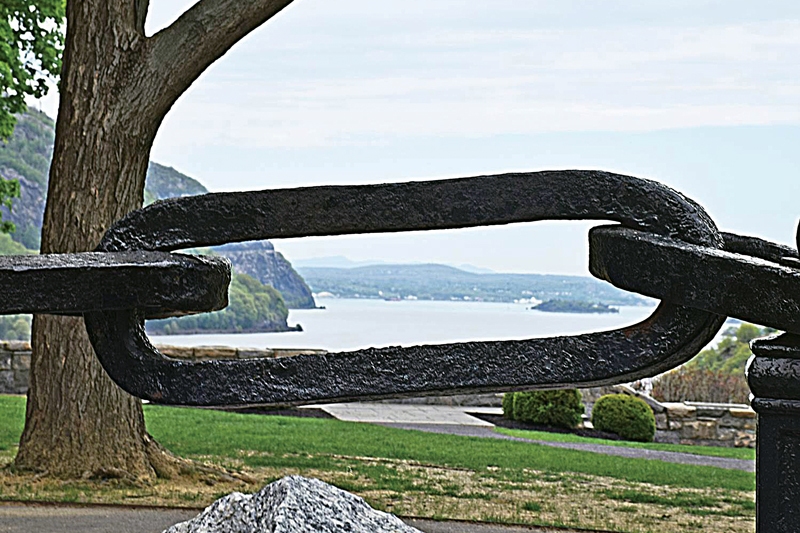It’s ironic that when I and Barbara Lardner Moore lived in Fishkill, Dutchess County, New York in the 1970s, we never knew that her Van Keuren ancestors there had played a role in the Revolutionary War there. Here’s a bit of their story.
At the time, the 1775 skirmishes at Lexington and Concord were not recognized as the tipping point for war and both sides proceeded cautiously. In New York City, a convention decided to create a document which came to be called the “Revolutionary Pledge”. Signers would be assumed as supporting the demands of the colonists and non-signers as loyal to the crown. In Dutchess County, 1820 male residents signed and 964 refused. In Fishkill, Tjerke Van Keuren was among the signers. Abraham Van Keuren and M. Van Keuren signed in Poughkeepsie.
Shortly thereafter, it was decided that loyalists should surrender their arms. Committees were formed to visit each Tory family and make a friendly request for their weapons. Of course, the weapons were seized if not surrendered voluntarily. In the Fishkill area, 431 weapons were gathered in this manner.
If war were to come, the British had a huge advantage. Simply stated, they had an army in America and the rebels did not. Each colony was requested to form units for Washington’s army as well as militia for home defense. New York created five regiments of infantry, plus cavalry, artillery, and other units. In addition, each county added to their existing militia units. Six regiments of militia and a few other units were formed in Dutchess County. At least six Van Keuren men enrolled in the militia units.
It became clear that Britain’s response would be war when their army and fleet routed Washington’s troops in New York City. The capital of New York evacuated to Fishkill, where it resided for nearly six months. The Sixth Dutchess militia, including Cornelius Van Keuren, was sent to Washington’s army, fighting in the battles of Harlem and White Plains.
The Marquis de Lafayette wrote of the necessity of protecting Dutchess County: “Fishkill has all of the necessary conditions for a place for a depot, because that village is situated on the main road from Connecticut [roughly today’s I-84] and near the North River [another name for the Hudson River].”
The British occupation of New York City presented a grave danger to the state because the long navigable extent of the Hudson River would allow the British to strike deep within the state. The Continental Congress decided to block the river with great chains in two places: at Fort Montgomery and at West Point.
Sometime before 1740, Tjerk Van Keuren (the grandfather of the Tjerk mentioned above) had bought land at Spackenkill (roughly where the IBM plant is located) and given it to his son, Matheus. There the village of Van Keurens grew up around a foundry operated by Matheus. The foundry was chosen for the job of forging the chain that would stretch across the river at Fort Montgomery, near Bear Island.
Shortly before the Battle of Saratoga, British forces attacked Fort Montgomery from the land, conquered it, and removed the chain from the river. Reprisal was swift. The British burned the village of Van Keurens to the ground with one odd exception—Matheus’s first home, one that he had sold to Theophilus Anthony. One story says that a slave girl bribed the British with fresh bread and marmalade. Another story says that a British captain was smitten with the beauty of Anthony’s daughter. Both stories have some credence; the slave girl was buried in the Van Keuren family cemetery and a former British officer returned after the war to marry Anthony’s daughter.
Of 308 armed engagements in the Revolutionary War, 98 occurred in New York State. The state provided 43,000 soldiers from a total population of 340,000 people, despite the fact that 1/10th of the state’s population lived in areas occupied by the British for most of the war. The soldiers were paid rarely, if at all. Some were paid in “bounty land”—land in unsettled portions of the state. Cornelius Van Keuren received a grant in Delaware County, where his son Matthew settled. Delaware County is on the border with Pennsylvania. It was cleared of Indians by the 1779 Sullivan Expedition—a reprisal for Iroquois participation in the Wyoming Valley Massacre.
Matheus Van Keuren—the forger of the Hudson River chain—was the 5 x great grandfather of Barbara Lardner Moore and June Lardner Waters. The other Van Keurens mentioned in the story are among his sons and grand-sons.
Most of this story comes from easily found histories of New York and Dutchess County. The photograph comes from Hudson Valley Magazine. I particularly thank D. G. Van Curen, the published historian of the Van Keuren family, for personal assistance in preparing this story.
